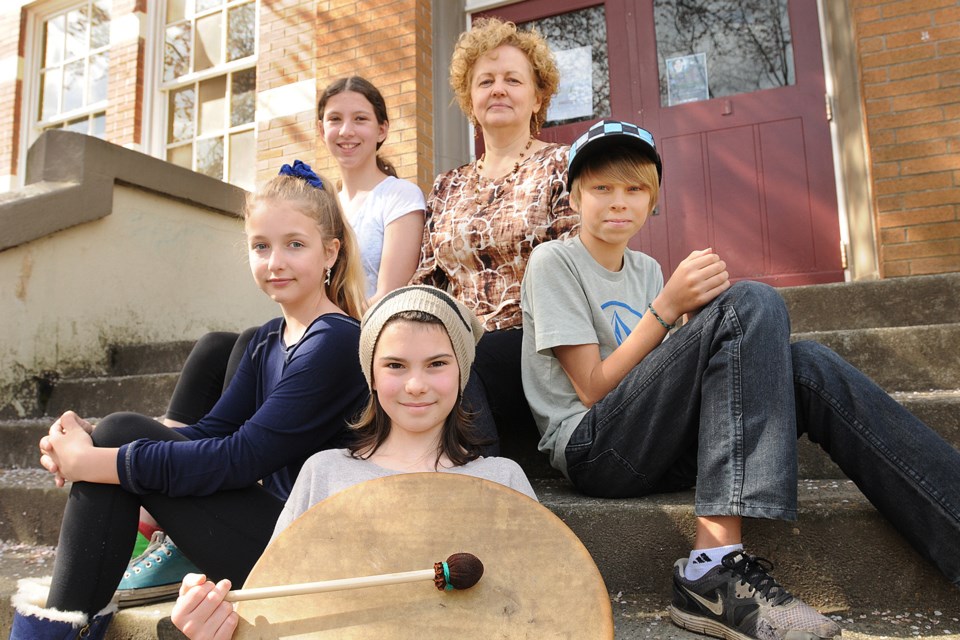It all started with sweaters. Elementary school teacher and avid knitter Gina Wane visited Vancouver Island, perused Cowichan sweaters and noted they were knock-offs.
“At that moment I thought my kids need to know about the Cowichan people and their art,” she said.
Wane returned to Bayview Community School in Kitsilano and launched lessons for her Grades 6/7 class about Coast Salish people, purling together social studies, science, language and art.
She assigned Sylvia Olsen’s novel Counting on Hope, which includes the 1863 naval assault on Kuper Island.
When Wane mused she should bring Cowichan knitters to Bayview, a student suggested the class should visit Kuper, now Penelakut, Island.
Twenty-three Grade 6 and 7 Bayview students visited Penelakut, a ferry ride from Chemainus, Feb. 11 to 14.
“What impressed me was that they were so welcoming,” 12-year-old Elyse Stacey said. “They were just so respectful to us… and I learned a lot. You can read stuff in books about the culture and their beliefs but when you actually see it happening, it’s so much different.”
Elders and students welcomed them at Penelakut Island elementary school and the reception lasted 90 minutes. Students shared their traditional names, parents’ names and origins.
“You can’t respect anybody else if you don’t respect yourself,” 12-year-old Charlotte Mackenzie learned.
Drum maker Jorge Lewis re-laced his drum while sharing the significance of securing the laces in four places in relation to the four elements, seasons and directions. Lewis told students a drum should be played to unearth the song within the drummer.
“When he said that we could keep it everyone was a bit surprised because he’d just spent so long [working on it],” said 11-year-old Rosalie Scott.
Students observed the reverence Lewis demonstrated for the yellow cedar and sealskin that shape the drum.
“Be very grateful for what you have and don’t take things for granted,” Stacey said they learned. “They respect everything in their lives even if it’s like a tree or something small. They always say thanks to it and the Creator.”
Brothers who’d attended the island’s notorious residential school spoke about having their hands whipped for writing in their native tongue.
But the Hul’qumi’num people, which include the Penelakut and Cowichan, also taught them about forgiveness.
Students met author Olsen and Cowichan knitters, visited the Qwu’tsun’ Cultural Centre in Duncan, the Legislature in Victoria and joined Penelakut students in a mini Olympics.
A youth volunteer memorized each Bayview student’s name in three days and distributed personalized Valentines.
“In their culture they never leave anybody out,” Stacey said. “Our culture, we just shut lots of people out and I just like how even if they’ve done something bad, they still forgive them and they still want to keep them in their culture.”
Wane wants every Grade 6 and 7 student to learn from aboriginal people on their recognized turf.
Bayview parents paid $250 per child, the Vancouver School Board contributed $500 from its aboriginal education fund and a Capital for Kids grant from the provincial government covered ferry costs.
Penelakut students hope to visit in May.
“If every student could do this exchange, we can change a generation,” Wane said.
crossi@vancourier.com
twitter.com/Cheryl_Rossi



